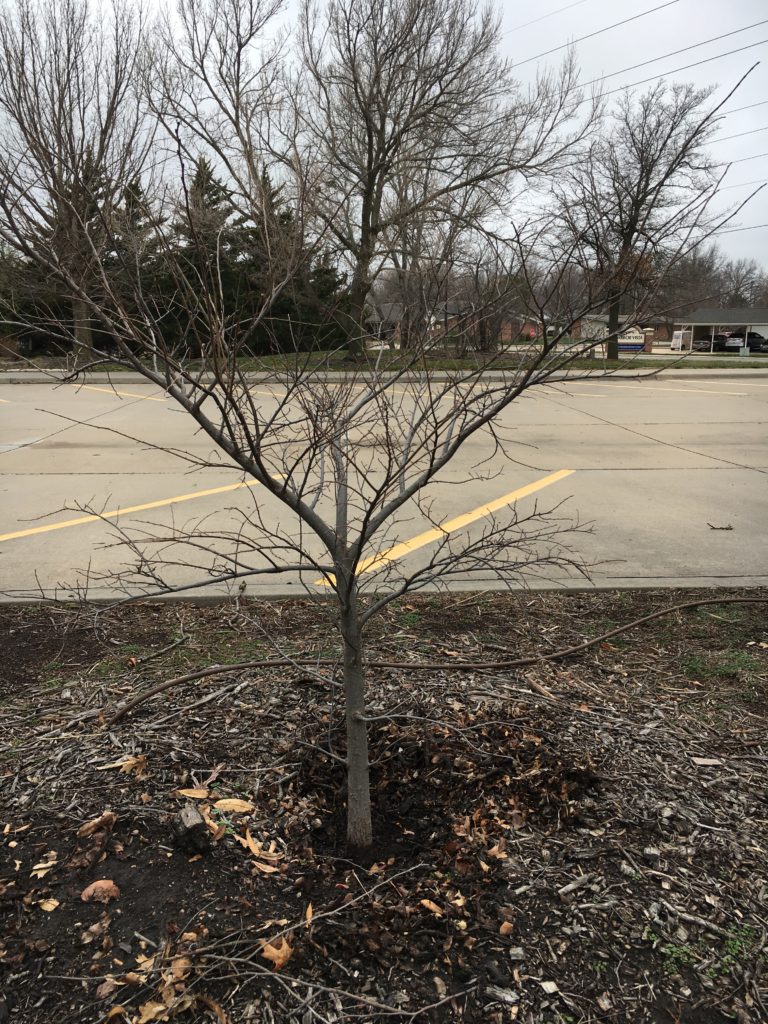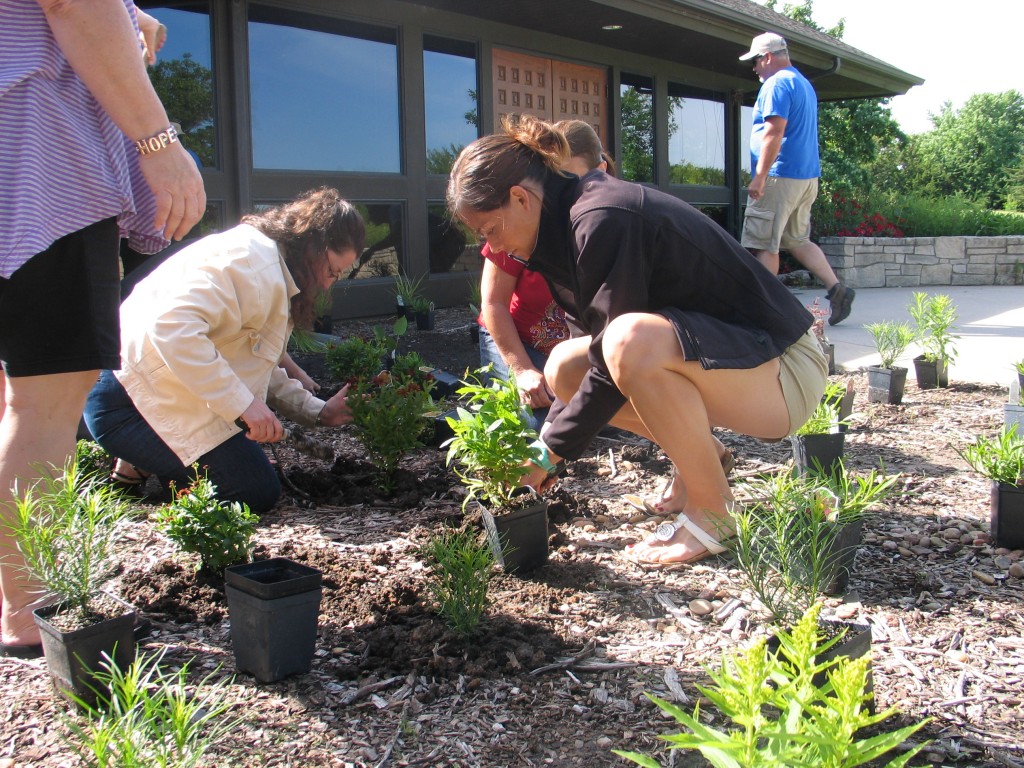One key to successfully establishing plants in the fall is to periodically check them through the winter months. It has been an extremely dry fall and early winter in our area and for much of Kansas. More than likely, these new established plants are dry and would benefit from a deep soaking. Now is the time to check your plants if you have not already.
Trees and shrubs
Newly planted trees and shrubs are still growing as long as the ground is not frozen and will benefit from up to five gallons of water. Larger trees may need more water. If you have properly planted them with a small basin around the trunk, you can fill it with water and let the water percolate into the soil. This basin concentrates most of the moisture around the original root ball and those fresh new roots. I would even water trees and shrubs you planted within the last few years, because they have not fully developed sustaining root systems. Keep in mind that evergreen trees are always losing and using moisture. They are the most susceptible to desiccation during winter.

Perennials
Hopefully, you were able to get your grasses and perennials established properly last fall. As part of the establishment process, roots attached to the damp soil and they were able to take up moisture on their own. As that soil has dried over the past few months, the perennials are at risk of drying out since they don’t have a deep fully developed root system. Check around the plants and water if the top couple of inches of soil is dry. Native grasses are not actively growing now since the soil temperature is below 60 degrees. But even grasses would absorb a little water this time of year, as well.

Watering options
- Soaker hoses: Use pressure compensating soaker hoses for foundation plantings or shelterbelts
- Overhead Sprinkler: Best for large areas of newly planted fescue or turf with competitive tree roots.
- Five gallon bucket: Drill a small hole in the bottom of the bucket and let water slowly drain out over time.
- Watering wand: Helps water specific plants and not overwater others that like it dryer.
- Garden hose: Place at base of trees or shrubs and let trickle until soil is deeply soaked.
Frequency
Water every few weeks or every time the top couple inches of soil is dry. I go out and physically dig down in the soil to inspect moisture content. If I water this time of year, I make sure to drain any hoses and sprinklers when I am finished to prevent freeze damage.
It may seem like plants are fine since they are not actively growing this time of year, but it has been extremely dry. A quick inspection of the soil will tell you if you need to water or not. Be proactive and water during the winter months as needed. If you have already put the effort into planting them, why not help them along through this drought? Your plants will benefit from your diligence by producing blooms and habitat for you and wildlife next season.
